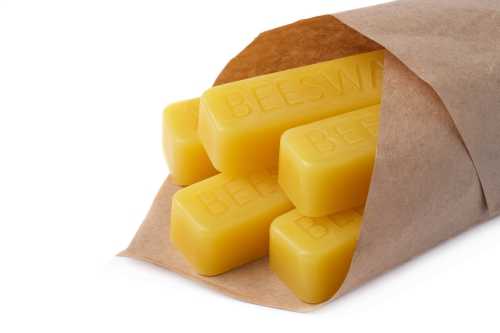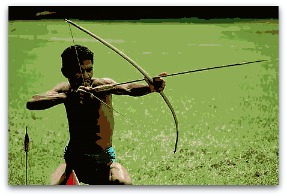Maharlika (The Philippines)
Table of Contents
| Activity | Method |
|---|---|
| Trade | Barter |
Territories
Manila 麻逸
The kingdom of Maharlika* (Ma-i) is north of Borneo. Its capital has over 1,000 families settled together along both banks of a creek [Pasig River].
Superphysics Note
The Maharlikans cover themselves with a sheet of cotton cloth or hide the lower part of the body with a sarong. There are bronze images of gods of unknown origin, scattered about in the grassy wilderness.

Theft is rare.
When merchant ships arrive in their territory, they enter the harbor and anchor before the government market.
- This “government market” is their place for bartering.
Officials board the ships and mingle freely with the merchants.
The chiefs are fond of white umbrellas. This is why the traders offer them as gifts.
Their trading customs are as follows.
Local traders gather in crowds, and freely step over the bamboo fences to take goods away.
At first, this seems incomprehensible. But afterwards, the merchants slowly identify who carried off which item, and nothing is ever lost.
These traders then carry the goods to other islands for trade.
They typically return only around the eighth or ninth month.
They repay the ship merchants with what they earned.
Some, however, do not return by the expected time. Thus, ships that trade in Maharlika are the last to come home.
Superphysics Note
Superphysics Note
The following places belong to Maharlika:
- Visayas
- Babuyan (Paipuyen)
- Mindanao (Pulilu)
- Luzon
- Butuan (Likintung or Dongliuxin)
- Bulacan (Lihan)
Maharlikan Exports

Their exports are:
- yellow beeswax
- cotton cloth
- pearls
- tortoise-shell
- medicinal betel-nuts*
- yuta cloth (udapu)
Superphysics Note
Maharlikan Imports
Foreign merchants barter for these with:
- porcelain vessels
- trade-gold
- iron censers or cauldrons
- lead for bullets
- multicolored glass beads
- iron needles*
- similar goods
Superphysics Note
Visayas (41: San-yu 三嶼)
The Visayas* (Sanyu or Three Islands) belong to Maharlika:
- Panay-Cebu (Jiamayen)
- Palawan
- Leyte-Samar (Pakinung or Bajinong)
Superphysics Note
Each has its own tribes scattered over the islands. Together these three islands are called San-yu [Visa-yas].
When ships arrive there, the natives come out to trade with them.
Their local customs are about the same as those of Maharlika. Each settlement contains over a thousand households.
The land is full of steep hills and jagged peaks that rise like walls. They build houses of woven thatch, clinging to lofty and dangerous spots.
There are no springs in the mountains. And so the women carry 2-3 jars suspended from head-straps, fetching water from streams, climbing as though on level ground.
In the remotest valleys, there lives another tribe called Aetas (Hai-tan) who are small, with round yellow eyes and curly hair and exposed teeth.
They nest in treetops. Sometimes, parties of 3-5 lurk in the jungle and shoot arrows on passers-by without being seen. Many have fallen victims to them.
When given a porcelain bowl, they eagerly pick it up and leap away joyfully.

When merchants arrive at a settlement, they do not dare go ashore immediately.
First, they anchor mid-stream and beat drums to summon the traders.
The people then race out in small boats, bringing cotton cloth, yellow wax, foreign cloth, and coconut mats to trade.
If the prices cannot be settled, the local chiefs come to negotiate.
Merchants present them with silk umbrellas, porcelain, and rattan baskets, and they leave 1-2 men as hostages.
Only then do they disembark for trade. Once trading ends, the hostages are returned. Ships usually stay no more than 3-4 days before moving on.
The various tribes surrounding the San-yu islands are not under a single authority.
Their mountains lean toward the northeast. When the south wind blows, the waters crash into the mountains with violent waves, making anchorage impossible.
This is why ships trading with San-yu typically set sail home in the 4th or 5th month.
Goods used for barter include porcelain, black silk, patterned silk, multicolored beads, lead net-weights, and white tin.
Visayan Exports
Foreign traders arrive by announcing their presence by beating drums then moor their ships midstream. The Visayans race to the ship in small boats, carrying the following for barter:
- cotton
- yellow wax
- native cloth
- coconut-heart mats
If the prices of goods cannot be agreed upon, the chief of the local traders must go in person, in order to come to an understanding.
The natives are then offered gifts of:
- silk umbrellas
- porcelain
- rattan baskets
The foreign merchants hold one or two natives as hostages on board while they go on shore to trade. They return those hostages after trading is finished.
A ship will only anchor for 3-4 days and then move to another place. The Visayan settlements are along the coast are not connected by common jurisdiction. They are are all independent.
The coast faces south-west. During the south-west monsoon, ships are unable to anchor there. This is why the traders to the Visayas do the return trip in May or June.
Visayan Imports
The following are exchanged in barter:
- porcelain
- black damask
- various other silks
- beads of all colors
- leaden sinkers for nets
- tin
Mindanao
Mindanao (Pulilu) is connected with the Visayas, but its settlements are somewhat more prosperous.
But most of the people are of a cruel disposition and fond of attacking and robbing*.
Superphysics Note
The sea around them contains stones called lu-gu, sharp as thorns or dried wooden barbs, sharper than swords or halberds.
Ships passing nearby must twist and turn to avoid them.
From here come coral-trees, the tsinglangkan, and the shanhu varieties. But they are very difficult to get.
Their local customs and trade practices are the same as the Visayas.
Yuan Dade Nanhai zhi 元大德南海志
Brunei administrated the following places* in Maharlika:
- Mindanao (Malilu 麻裏蘆)
- Manila (Ma-yi)
- Puduan Sulu
Superphysics Note
Additional Possible Timeline by Austin Craig
| Year | Event |
|---|---|
| 221-251 | First contact with China |
| 414 | Buddhist pilgrim’s ship arrives |
| 605 | Visayas invades Taiwan |
| 627 649 | First tribute to China from Dapitan |
| 982 | Manila merchants in Canton |
| 1372 | First tribute to China from Luzon |
| 1405 | Chinese official sent to govern Luzon (possibly via Pangasinan) |
| 1405 | Luzon tribute to China |
| 1407 | Visit by Chinese Armada |
| 1406 | Embassy from Pangasinan |
| 1417 | Mission and Burial of Sulu king in China |
| 1420 | Another Sulu mission |
Caste system in the Philippines
| Caste | Modern Manifestation |
|---|---|
| Datu | Landlords, Government/Politicians, Executives, Large Investors, Financiers, Large Asset holders |
| Maharlika | Self-Employed, Employees, Freelancers |
| Alipin Namamahay | Maids, Drivers, Kasambahay |
| Alipin Sagigilid | Criminals, Homeless, Beggars |
| Babaylan | Church, Religions, Researchers, Universities, Healthcare system |